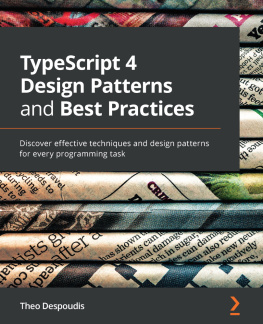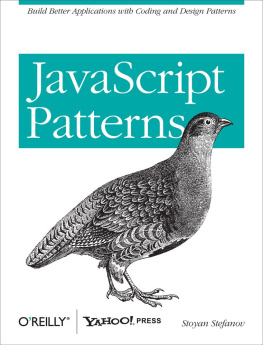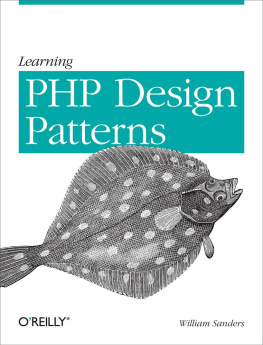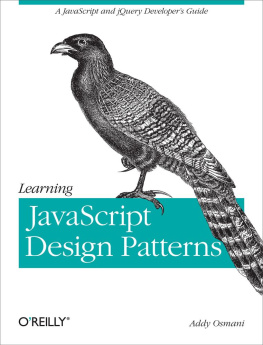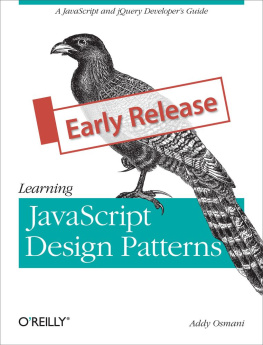Addy Osmani [Addy Osmani] - Learning JavaScript Design Patterns
Here you can read online Addy Osmani [Addy Osmani] - Learning JavaScript Design Patterns full text of the book (entire story) in english for free. Download pdf and epub, get meaning, cover and reviews about this ebook. year: 2012, publisher: O’Reilly Media, Inc., genre: Computer. Description of the work, (preface) as well as reviews are available. Best literature library LitArk.com created for fans of good reading and offers a wide selection of genres:
Romance novel
Science fiction
Adventure
Detective
Science
History
Home and family
Prose
Art
Politics
Computer
Non-fiction
Religion
Business
Children
Humor
Choose a favorite category and find really read worthwhile books. Enjoy immersion in the world of imagination, feel the emotions of the characters or learn something new for yourself, make an fascinating discovery.
- Book:Learning JavaScript Design Patterns
- Author:
- Publisher:O’Reilly Media, Inc.
- Genre:
- Year:2012
- Rating:3 / 5
- Favourites:Add to favourites
- Your mark:
Learning JavaScript Design Patterns: summary, description and annotation
We offer to read an annotation, description, summary or preface (depends on what the author of the book "Learning JavaScript Design Patterns" wrote himself). If you haven't found the necessary information about the book — write in the comments, we will try to find it.
With Learning JavaScript Design Patterns, youll learn how to write beautiful, structured, and maintainable JavaScript by applying classical and modern design patterns to the language. If you want to keep your code efficient, more manageable, and up-to-date with the latest best practices, this book is for you.
Explore many popular design patterns, including Modules, Observers, Facades, and Mediators. Learn how modern architectural patternssuch as MVC, MVP, and MVVMare useful from the perspective of a modern web application developer. This book also walks experienced JavaScript developers through modern module formats, how to namespace code effectively, and other essential topics.
- Learn the structure of design patterns and how they are written
- Understand different pattern categories, including creational, structural, and behavioral
- Walk through more than 20 classical and modern design patterns in JavaScript
- Use several options for writing modular codeincluding the Module pattern, Asyncronous Module Definition (AMD), and CommonJS
- Discover design patterns implemented in the jQuery library
- Learn popular design patterns for writing maintainable jQuery plug-ins
This book should be in every JavaScript developers hands. Its the go-to book on JavaScript patterns that will be read and referenced many times in the future.Andre Hansson, Lead Front-End Developer, presis!
Addy Osmani [Addy Osmani]: author's other books
Who wrote Learning JavaScript Design Patterns? Find out the surname, the name of the author of the book and a list of all author's works by series.

![Addy Osmani [Addy Osmani] Learning JavaScript Design Patterns](/uploads/posts/book/120569/thumbs/addy-osmani-addy-osmani-learning-javascript.jpg)


